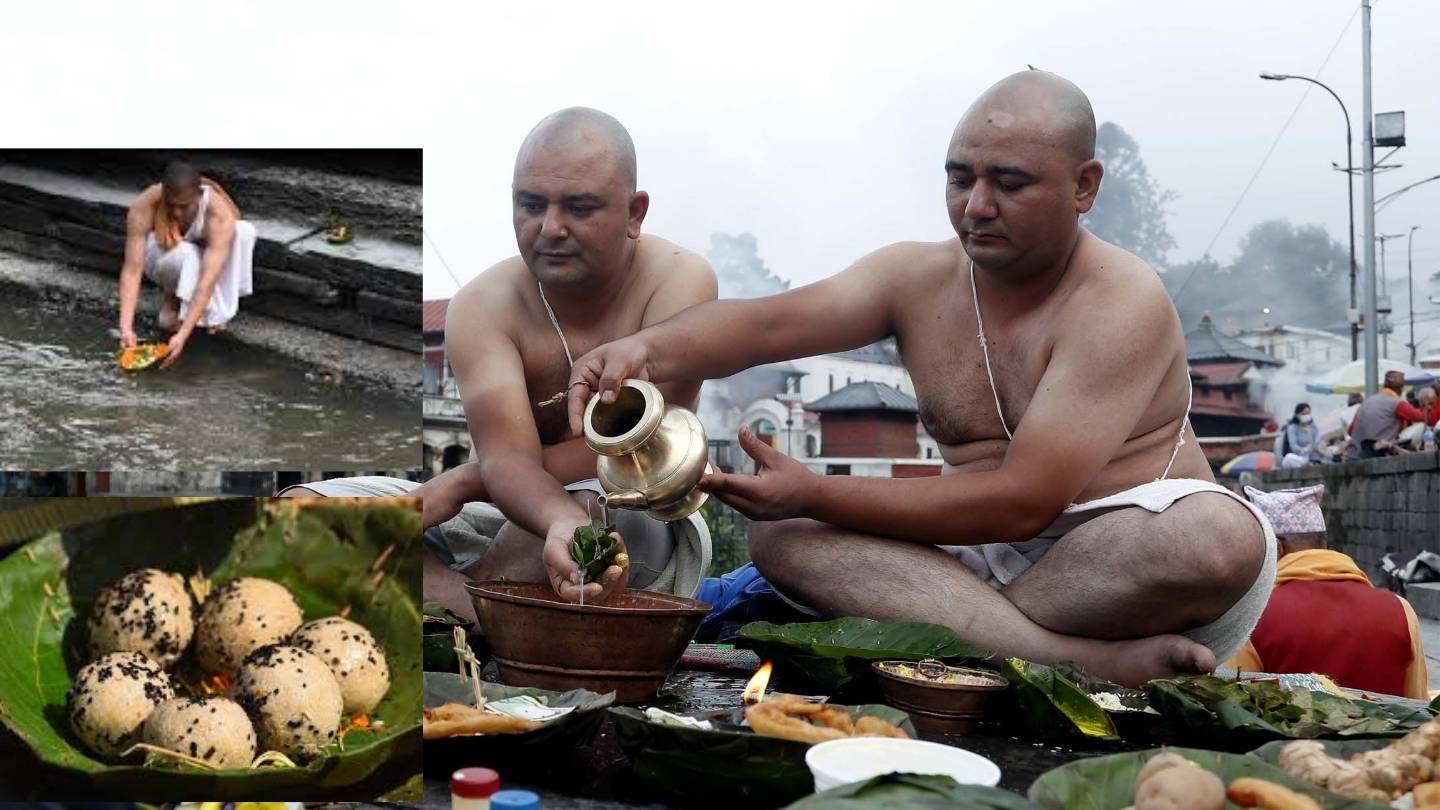
Sorha Shraddha Rituals and Their Spiritual Importance
Sorha Shraddha begins with the Pitri Paksha, which also marks the eve of Bada Dashain. This means that Navadurga worship cannot be performed without first conducting Sorha Shraddha. Worship of deities must be preceded by offerings to ancestors.
The scriptures state:
“Surye kanyagate shraddham yo na kuriyat grihashrami, dhanaputrah kutastasya pitri nishwasa pidanat.”
This implies that when the sun enters Kanya Rashi (Virgo), descendants must perform Shraddha for their departed ancestors. If neglected, ancestors become distressed and return with a curse.
The Importance of Correct Words and Emotions
The saying “Pitarah vakyam ichchhanti bhavam ichchhanti devatah” means that deities seek devotion, while ancestors seek correct words and expressions. Impure or incorrect language makes offerings ineffective, and rituals performed without proper methods yield no results.
Types and Timing of Shraddha
According to scriptures:
-
Abhyudayika or Daivika Shraddha is performed in the morning.
-
Parvana Shraddha (Sorha Shraddha) is performed in the afternoon.
-
Ekoddishtha Shraddha is performed at midday on annual death anniversaries.
If Magha Nakshatra falls, Parvana Shraddha must not be done, as it harms descendants.
Flowers Used in Shraddha
Shraddha accepts certain flowers:
-
Bhringaraj
-
Agastya
-
Tulsi
-
Satapatrika (Marigold)
-
Champak
-
Sesame flowers
Flowers forbidden in Shraddha include:
-
Ketaki
-
Karavira
-
Bakula
-
Kunda
-
Patali
-
Jati
Special Considerations in Shraddha
If Shraddha cannot be performed on the prescribed day, it may be done on Ekadashi, Aunsi, or even the Gau Tihare Aunsi.
At its core, Shraddha means faith. It is about remembrance, gratitude, and devotion to one’s ancestors—father, mother, and forefathers—without whom existence is impossible. Scriptures say ancestors exist in one of the 8.4 million life forms, and food offerings reach them in forms suitable to their embodiment.
Tarpan and Its Process
On the day before Shraddha, descendants practice devotion. On the Shraddha day, the first act is Tarpan (offering of water mixed with barley, sesame, and kusa).
-
Sons bear the primary responsibility, as the word Putra itself means one who rescues ancestors from Pu (hell).
-
Tarpan is usually a daily practice, but due to changing times, it is performed especially during Shraddha.
-
Scriptures like Brahma Purana, Narada Purana, Bhavishya Purana, Hemadri, Manusmriti, and Yajnavalkya prescribe its methods.
During Tarpan:
-
Offerings are made to Brahma and other deities.
-
Water is offered facing east to Prajapati, deities, sages, Gandharvas, Apsaras, Nagas, Yakshas, spirits, animals, humans, plants, and herbs.
-
Ancestors are offered water twice, followed by offerings to divine ancestors.
Who Receives the Offerings
Offerings are made to fathers, forefathers, maternal relatives, and deceased family members. Those without descendants also receive Tarpan, using water-dipped sacred threads or clothes. It is believed that spirits consume water squeezed from garments during bathing.
For ancestors, one year equals a single day. Hence, annual Shraddha, performed with sincerity, is called Ekoddishtha Shraddha. During Pitri Paksha, it becomes Ekaparvana Shraddha.
Scriptural Rules and Restrictions
-
Without Pinda Daan, no yajna, donation, or puja is valid.
-
Women in menstruation cannot perform Shraddha.
-
Outcasts and those of different gotra are not invited.
-
Relatives such as sons-in-law, nephews, or close priests are invited.
-
Music, loud instruments, conch blowing, and crowd gatherings are avoided.
Place and Materials of Shraddha
If Shraddha is performed in a house or land not owned by the family, ancestors remain displeased. Hence, in cities, people prefer sacred places or pilgrimage sites.
Items essential for Shraddha include:
-
Milk, ghee, sesame
-
Clean kusa grass
-
Sacred utensils of silver and copper
-
Woolen blankets of Nepali wool
-
Cow and grandson (maternal lineage) are also considered necessary


